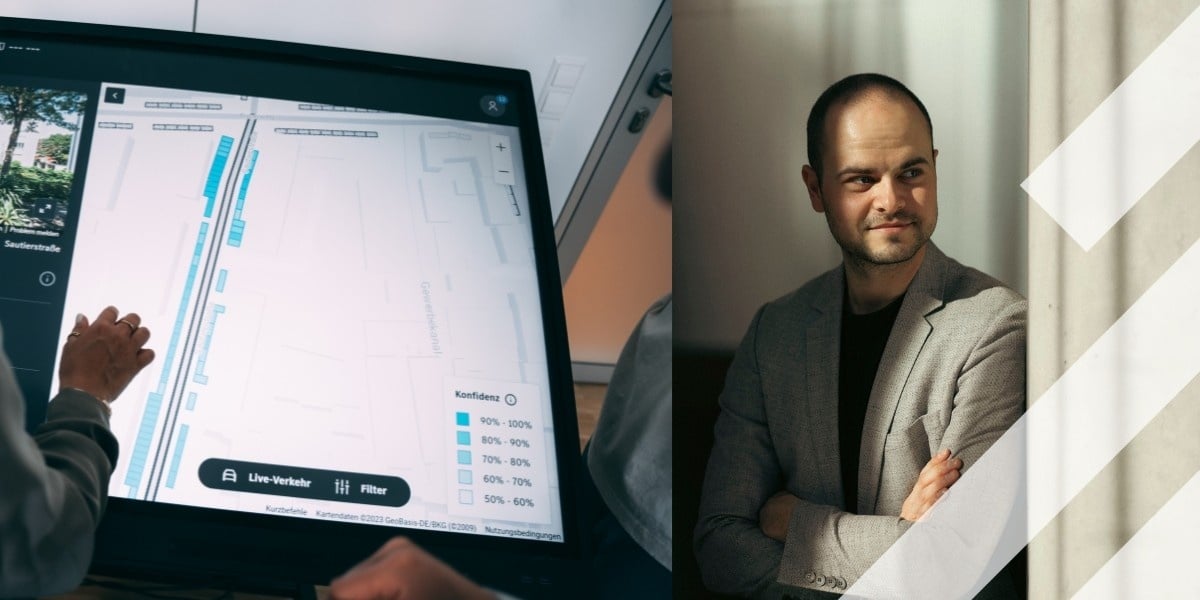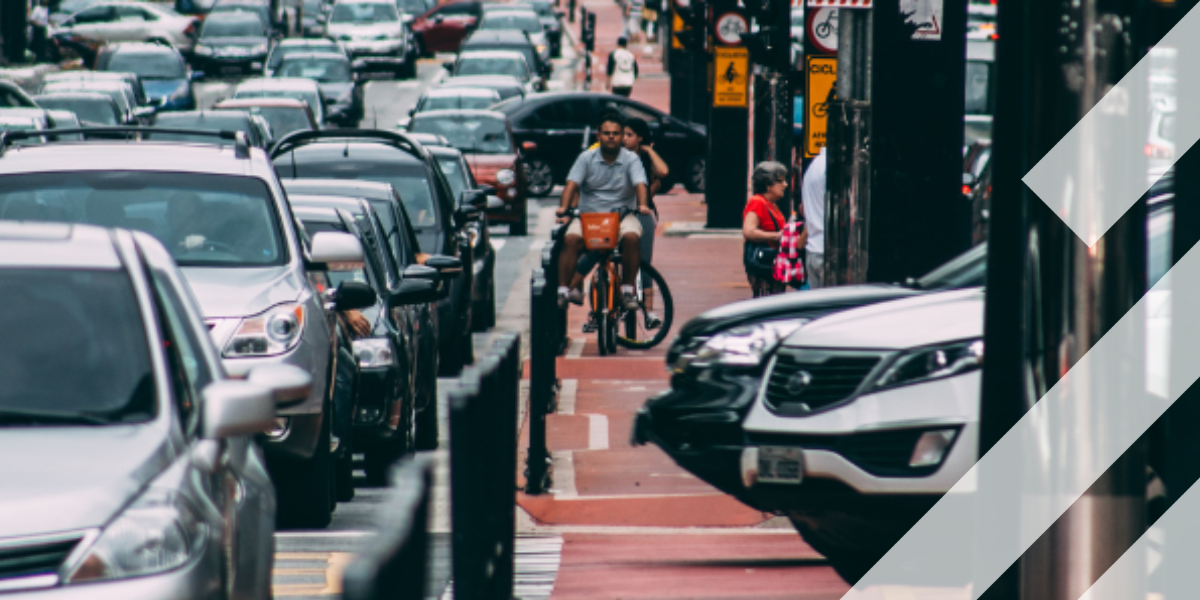Cities of tomorrow
When we think about getting around smart cities it’s common to picture electric autonomous vehicles, ride sharing, multimodal transportation solutions and unbridled connectivity – but for 360° smarter living it’s essential to consider more prosaic problems, too, such as parking.
A transportation tsunami is about to sweep through the streets of your city. You might not have felt it yet. But the rumblings are getting louder. Car manufacturers know it’s coming and are frantically placing bets on urban mobility solutions that hedge their decades-old investments into human-driven automobiles.
Inthe past two years, Toyota has invested US$500m in Uber and US$1bn into Uber’s South-East Asian competitor Grab, while BMW acquired parking payments platform ParkMobile in 2018 and Volkswagen took a controlling stake in WirelessCar in the same year. The world’s biggest tech companies also know this disruptive wave is coming and are seizing the initiative by investing in autonomous vehicle technology such as Waymo, electric scooter companies such as Lime Scooters and ride-hailing platforms like Didi Chuxing. City authorities have no doubt that a sea change is on the horizon as they scramble to rewrite decades-old legislation for the realities of the ‘sharing’ economy, the ‘gig’ economy and the ‘who-knows-what’s-next’ economy.
History repeating itself?
We saw this movie play out a century ago and the ending was more dramatic than anyone could have ever imagined. At the turn of the last century, the modes of transport in most of the world’s major cities were either horse, cart, tram, bicycle or shoe leather. Pollution in cities like London, Paris and New York was reaching uninhabitable levels. Horse manure – not carbon monoxide — was the culprit. In 1890, one well-known pundit predicted that if a solution was not found quickly, equine excrement would be piled up to the third floor of Manhattan’s balconies by 1930. As it turned out, in that same predicted timeframe, most of those four-legged vehicles had been replaced by four-wheelers powered by a combustion engine, and directed by couple of pedals and a steering wheel. Nobody but a few visionaries saw this coming. Henry Ford was one, and his Model T motor car changed the course of modern history.
“If I’d asked people what they wanted,” Ford famously uttered, “they’d have said a ‘faster horse’.”
Learning the lessons from history
To understand what is playing out today, and why there is such uncertainty around which type of vehicle – autonomous, flying, two-wheel or four-wheel – will emerge as the true disruptor, it is worth pausing to consider what led to Ford’s Model T emerging as the winner a century ago. Henry Ford and his team were not the only ones attempting to redefine the future of urban mobility. At ground level, a well-documented race between Ford and George Selden in America, and between Gottlieb Daimler, Karl Benz, Armand Peugeot and the Renault brothers in Europe was taking place, while the Wright brothers were in a race with Samuel P Langley and Sir Hiram Maxim to successfully launch the first flying vehicle. In 1914, a hugely popular ride-sharing program – the Jitney – caused such consternation with local government and the tram (or trolley) companies of the day that it was swiftly legislated out of existence. By the time it was shut down in 1915, it was doing an estimated 150,000 rides a day across North America. In the race to redefine the cities of tomorrow, what we saw play out in the urban transportation landscape in the first 20 years of the last century is eerily similar to what is taking place in the first two decades of this century. The impact on urban mobility is likely to be equally as dramatic.
Vehicle ownership is in decline…
And all cars will soon be self-driving. That is how some see it. But for all the talk of people no longer wishing to own vehicles, the statistics tell a different story. Research companies such as HIS Markit suggest that, while in many developed world economies our love affair with car ownership is dying, in developing world countries such as China, India, Brazil and Indonesia, ownership is on the rise. There are several reasons for this growth, but the main reason can be summed up in a single word: status. The hundreds of millions of new entrants into the middle class want the same trappings of wealth afforded to their developed world peers, and a car – or two – is one such privilege. An estimated 5,000 new cars hit the roads of Beijing every single day, with cities including Sao Paulo, Jakarta and Mexico City not far behind.
Government legislation to limit the number of vehicles on the road, invariably in the form of odd-even licence plate restrictions, have unsurprisingly led to many households buying a second vehicle to circumvent the laws, thereby exacerbating the problems around parking and congestion.
“Self-driving vehicles will solve the problem,” claim the progressives. They’re probably right, but not within the time horizon of even the most optimistic palm-reader. Google has been trying to solve this problem for the past 12 years and is still a long way from having Level 5 fully autonomous vehicles on mainstream roads. The challenges are manifold, but boil down to the fact that building technology which can see our streets through the eye of a human is fiendishly difficult; and that humans do things – often wildly unpredictable – that computers never would, such as crossing at a red light, texting while driving or puffing on a joint on Interstate 405’s outside lane.
1930
The year by which one 1890 pundit calculated that horse manure would be piled up to third floor windows in Manhattan, unless another form of transport could be found…5,000
The number of new cars estimated to hit the roads of Beijing every single day
Take a taxi for the sake of nostalgia
Taxis are about to enter retirement and taxi ranks will become museum exhibits. (“Did you seriously used to stand in line to wait for a taxi, Grandpa?” will become a familiar question asked by younger generations.) Some taxi companies will be saved by protective governments that see companies such as Uber, Lyft, Grab and Ola as the devil incarnate, while the more nimble taxi companies will get out of the middle of the road themselves just before the on-coming ride-hailing juggernaut flattens them altogether. New taxi models – such as ferrying infants and seniors from A to B – will emerge, but most fleets will ultimately resemble the roadkill they would consciously have tried to steer around.
Plug in, not fill up
Electric vehicles are certainly capturing public and corporate imaginations alike with their promise of cleaner transport. Significant portions of venture capital and private equity are being sunk into EV technologies, but the fundamental challenge is that electric vehicles all need to charge somewhere and charging currently takes a few hours. EV charge points are popping up all over our cities and point the way to a much cleaner future. Watch EV battery technology make quantum leaps over the next decade as it did with smartphones over the last decade.
Parking – the neglected ugly sister
Parking has reached a crunch-point as we head for the smart city of the future. Car parks are invariably dirty, smelly, expensive – and full. You wouldn’t leave your car in most car parks unless there was no alternative and, in almost every city around the world, parking remains a grudge-purchase. Nobody ever claimed, “I love parking,” just as few people ever professed their love for taking a taxi. But people do love Uber, and the question is why? A lot of it has to do with the human element. “Bob, 4.9 stars, will pick you up in two minutes,” injects a real driver into the equation. Bob likes conversation and has completed 4,300 trips. His photo suggests he’s a nice guy, which leads to a, “Hello Bob!” when you enter the car, and a great chat all the way to the airport ensues. If only parking were the same (it will be).
Parking marketplaces such as Kerb are changing the face of parking as most of us know it. Why park in a commercial car park when you can now book a space in a church or a hotel or a driveway for half the price, and with a single click via an app on your phone? The parking sector is where the taxi industry was 10 years ago: a low-tech, last-century mindset that has led to high prices, high tempers and high blood pressure. The more progressive car parks are removing their gates and replacing them with Pay-by-Phone and Pay-by-App solutions, but the real revolution is yet to happen.
There is a huge opportunity to personalize the parking experience in ways not dissimilar o those adopted by Uber and Airbnb. Someone who addresses you by your first name and who greets you on arrival might seem like a world apart from the barrier-heavy parking experience of today, but it wasn’t that long ago when there was a human at the entrance to just about every car park.
The future of parking will be gateless, ticketless and cashless. Most car park operators just haven’t realized it yet.
Claiming back cities
Up until the late 18th century, the centre of urban civilization had always been the marketplace. As the authors of The Cluetrain Manifesto so colorfully put it in 1999, “A few thousand years ago there was a marketplace. Never mind where. Traders returned from far seas with spices, silks, and precious, magical stones. Caravans arrived across burning deserts bringing dates and figs, snakes, parrots, monkeys, strange music, stranger tales. The marketplace was the heart of the city, the kernel, the hub, the omphalos. Like past and future, it stood at the crossroads. People woke early and went there for coffee and vegetables, eggs and wine, for pots and carpets, rings and necklaces, for toys and sweets, for love, for rope, for soap, for wagons and carts, for bleating goats and evil-tempered camels. They went there to look and listen and to marvel, to buy and be amused. But mostly they went to meet each other. And to talk.”
The Industrial Revolution of 1770-1870 changed the marketplace as we knew it. Sprawling factories offering decent pay and guaranteed work sprung up on the outskirts of cities, which led to social segregation – in the form of harsh production lines and, even up until the end of the 20th century, work cubicles and the boss’s infamous corner-office. Then came Netscape Navigator in 1994 and the internet began to reconnect people in ways we could only begin to imagine. There have been numerous catalysts for this monumental leap – from GPS mapping technology, to smartphone apps, to the ‘trust-leap’ that sharing economy model platforms such as Uber, Airbnb and Kerb have engendered. But urban transportation is one of the sectors which will be most dramatically impacted by these changes.
The 21st century marketplace
Today, the marketplace is creeping back into our daily lives. The internet spawned online marketplaces such as eBay, Amazon, Alibaba and Facebook – where people could congregate, barter and chat – while our quest for a more transcendent existence has seen farmers’ markets, organic produce and boutique craft stores reappearing in cities as diverse as San Francisco, Santiago and Saigon. The walls are coming down on the segregated workplaces of the past two centuries, as employers’ once-rigid attitudes to flexible work environments soften, as co-working alternatives such as WeWork proliferate and as the financial reality of five-year office leases eats deeper into margins. Coupled with this is the dawning realization among governments that cities have become inhumane environments. Pollution, congestion and stress have created a ‘quality of life’ that is anything but.
The smart city movement has fueled positive competition between governments at a local, federal and international level. Ride-hailing companies like Uber, Grab and Ola might not yet have proved their financial viability, but they’ve certainly proved their popularity. Meanwhile, smart-parking platforms such as Kerb, Rover and Arrive have demonstrated that people are willing to rent out their parking spaces when they’re not being used, in return for a tidy income – teaching the same lesson to commercial car parks that Airbnb taught hotels.
The stalls of yesteryear’s marketplace are reappearing in cities across the world in the form of Bikram yoga rooms, beeswax candle shops and Burgundy tasting bars. People are craving more meaningful urban environments in which to interact with one another. The congestion, noise, parking and pollution have suddenly become too much.
Citizens want their cities back. The implications for local authorities, commercial landlords and vehicle manufacturers will be of a magnitude never imagined. Don’t be surprised to see many swept away by this wave of change.
Rob Brown is co-founder and managing director of Kerb, a global peer-to-peer and business-to-business parking marketplace. Kerb is available on iOS, Androd and via www.kerb.works
Share your story
Do you have an innovation, research results or an other interesting topic you would like to share with the professionals in the infrastructure, traffic management, safety, smart mobility and parking industry? The Intertraffic website and social media channels are a great platform to showcase your stories!
Please contact our Sr Brand Marketing Manager Carola Jansen-Young.
Are you an Intertraffic exhibitor?
Make sure you add your latest press releases to your Company Profile in the Exhibitor Portal for free exposure.
Get up to speed on the mobility industry - our newsletter straight to your inbox!








